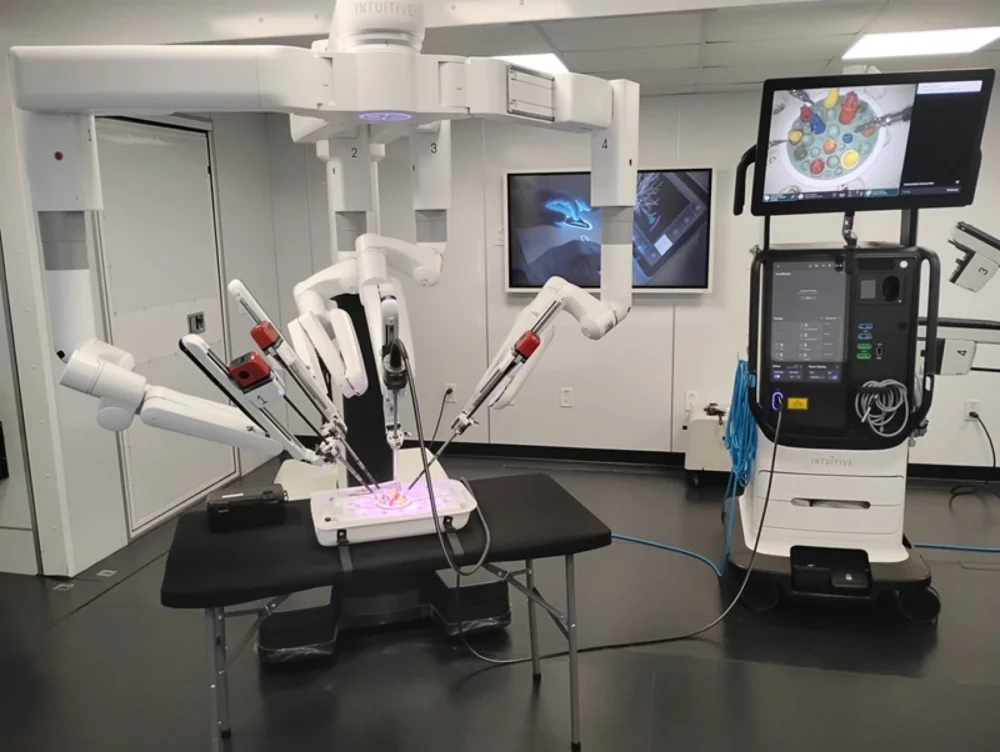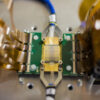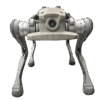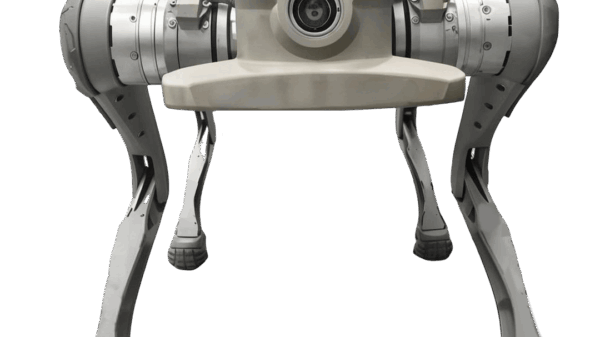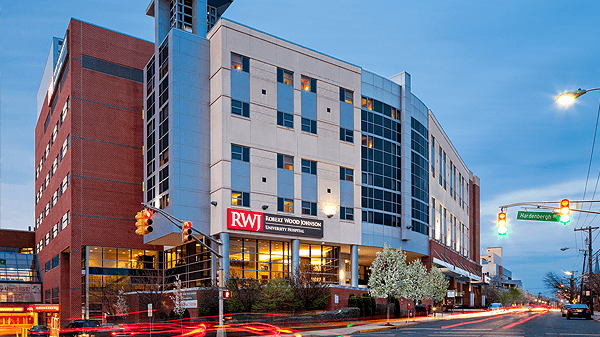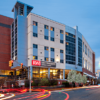The University of Kentucky Markey Cancer Center is demonstrating a breakthrough in lung cancer treatment.
Announced last Tuesday, a new semi-truck outfitted with advanced robotic systems now allows same-day diagnosis and surgery for patients.
The Thoracic Oncology Mobile Experience showcases how technology can change lives in a state where lung cancer rates remain among the nation’s highest.
The centerpiece is the combination of the ION Endoluminal system and the da Vinci 5 surgical robot. Together, they allow doctors to biopsy lung nodules and remove tumors in one session. Since February, UK HealthCare has used the combined procedure six times. This approach eliminates weeks or months of waiting between diagnosis and surgery, a gap that often compounds patient anxiety and worsens outcomes.
“We can tell them, ‘Yes, it’s a cancer, and then it’s out before they’re even awake,’” said Shari Meyerson, a thoracic surgeon at Markey.
She said the ability to confirm and treat cancer in the same day lets patients get an answer immediately.
“That wait between diagnosis and treatment knowing that there is a cancer in your body,” said Meyerson. “That is horrible for patients.”
For Scott Yee, another Markey surgeon, the shift represents a critical advance.
“Having the diagnosis and treatment of that cancer all in one time is of essence for our patients,” he said. Yee emphasized that immediate care changes the trajectory for people who otherwise would face delays.
Read more: Breath Diagnostics gives the public the chance to join the fight against cancer
Read more: Breath Diagnostics leader speaks at lung cancer education event in Louisville
Initiative speaks to Kentucky’s urgent need
The Markey Cancer Center is Kentucky’s only National Cancer Institute-designated “Comprehensive” Cancer Center. That status places it among an elite group of more than 50 centers nationwide recognized for excellence in research, prevention, and treatment.
The designation also demonstrates its ability to bring clinical breakthroughs directly to communities that need them most. Furthermore, construction is underway on a USD$781 million facility that will consolidate outpatient cancer services, imaging, pharmacy, and research. The new 550,000-square-foot building, set to open in 2027, will expand Markey’s reach even further.
The mobile demonstration truck plays a symbolic role in that expansion. It shows how cutting-edge medicine can move beyond hospital walls. Additionally, it raises awareness of lung cancer screening for high-risk populations.
Regional cancer specialists note that those aged 50 to 80 with long smoking histories remain the most vulnerable. However, nonsmokers like Buede remind the public that no one is fully immune.
The initiative speaks to Kentucky’s urgent need. The state consistently records some of the country’s highest lung cancer rates. In addition, rural populations often face barriers to timely care. By showcasing robotic systems in a mobile setting, Markey is addressing both innovation and access.
Patients like Buede bring the message home. She continues to tell others that early detection and new technology can change lives. “It’s better knowing,” she repeats, pointing to her survival as proof. For UK Markey Cancer Center, that combination of technology, speed, and patient empowerment defines the next frontier in cancer care.
Read more: Breath Diagnostics pioneers novel lung cancer breath test
Read more: Breath Diagnostics takes aim at lung cancer with One Breath
Cancer diagnosis has come a long way
The cancer diagnosis market is rapidly evolving with lower-risk alternatives to traditional imaging.
Companies like Grail Inc (NASDAQ: GRAL) are pioneering blood-based tests, known as liquid biopsies, to detect cancer earlier. Their Galleri test can identify more than 50 types of cancer from a simple blood sample. Additionally, the test aims to find cancers before symptoms appear, offering patients a less invasive option than low-dose CT scans.
Meanwhile, Breath Diagnostics has developed the One Breath test, a non-invasive device that analyzes exhaled breath for chemical markers linked to cancer. Early studies suggest it could detect lung cancer and other tumors with significant accuracy. In addition, the approach avoids radiation exposure entirely, making it safer for repeated monitoring.
Traditional low-dose CT scans remain the standard of care for high-risk populations, especially for lung cancer. However, CT scans expose patients to radiation and often require follow-up procedures after false positives. Furthermore, accessibility remains limited in some regions, which can delay diagnosis.
Innovators like Grail and Breath Diagnostics address these gaps by providing convenient, low-risk screening options. They also reduce patient anxiety and streamline follow-up care. For example, liquid biopsies allow physicians to detect molecular changes without invasive procedures, while breath tests offer near-instant results.
The market for these alternatives is growing as regulatory agencies and health systems increasingly recognize their potential. Additionally, ongoing clinical trials continue to refine accuracy and expand cancer type coverage. In the coming years, a combination of blood and breath-based screening could complement, or in some cases replace, traditional imaging.
The push toward lower-risk, non-invasive diagnostics reflects a shift in cancer care. Furthermore, these technologies promise to detect disease earlier, improve patient outcomes, and increase access to timely treatment.
.
joseph@mugglehead.com

